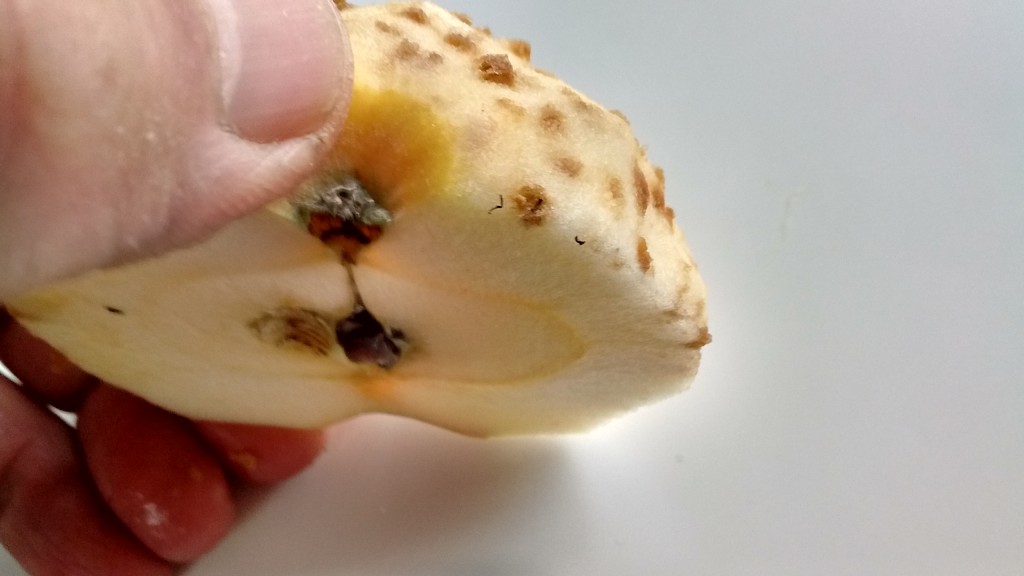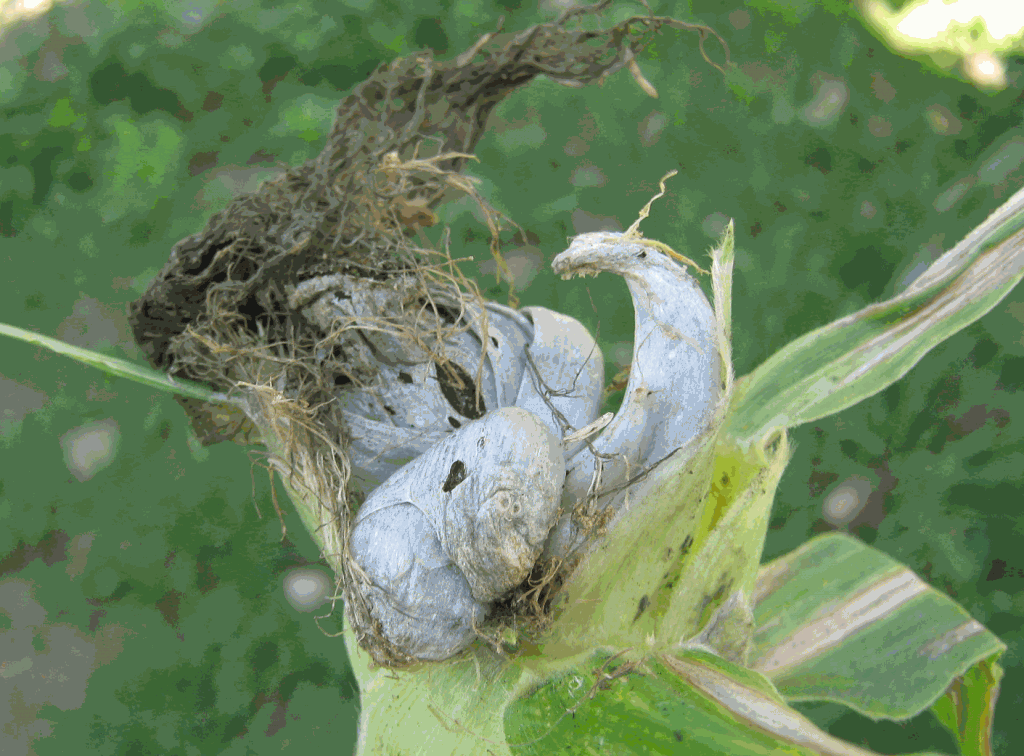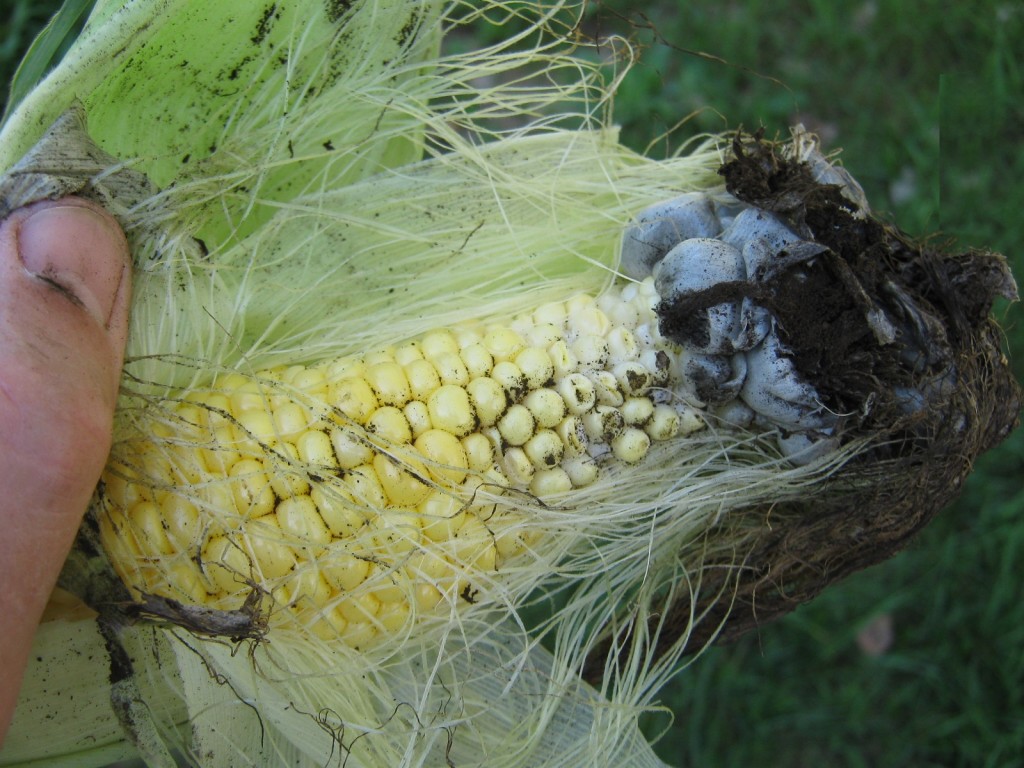One of our goals in gardening is to grow as much as we can for Thanksgiving and Christmas dinner, I bet you do that too. Even if we end up with only enough servings for just Thanksgiving dinner, I call it a successful harvest.
Judy needed to come up with a dessert for Thanksgiving this year so she decided on homemade-from-scratch, gluten-free apple cobbler. Of course you need apples for apple cobbler so I went to my storage bin for the apples.
They were not the pristine apples I usually have, these were covered in small, unsightly spots. I’ve seen those symptoms before in years past. They had ”cork spot” sometimes called “bitter pit”.
To me, cork spot is a more accurate description than bitter pit. For one thing, apples don’t have a pit, they have an apple core. The other reason is because of the corky appearance and texture of the affected area. On the other hand, the spots do have a bitter taste, so “bitter pit” works too.
Some scientists separate bitter pit and cork spot into two different disorders with the difference being the timing when the spots show up. If they show up before harvest, it is cork spot. If it develops in storage they call it bitter pit. Either way it is not caused by any disease organism or insect.
Even though the disorder may not show up until Thanksgiving time, it has its beginning way back during the growing season when the apple was still on the tree. As the apple grows, there is some competition for water between the developing fruit and the growing leaves. That water competition may cause a calcium imbalance which weakens the cell wall in the fruit leaving it open for the symptoms to develop.
Pruning, of course, has a big effect on the number of leaves on a tree. So the proportion of apples to leaves can be different from year to year.
Rain or lack of it determines the amount of soil moisture available and that can change almost weekly during the growing season. So it is a complex set of events that contribute to the problem which is why you may not see it every year in your home grown apples.
Improper storage will often lead to bitter pit. In my case, I’m guessing it was because I did’t get the apples into storage quickly enough. That can cause the spots to show up before you have a chance to use the apples.
I had a few different varieties of apples in storage and some apples had spots and others didn’t — some varieties are more prone to bitter pit than others.
The corky texture of the spots made it much harder to peel the apples. Also, I ended up with smaller pieces because I had to cut away the affected area to get rid of the bitter taste.
Judy’s apple cobbler turned out great and was a big hit at the dinner, you couldn’t even tell it was gluten free!
I spared everyone from the convoluted story about the apples and their bitter pit spots.
Bob


